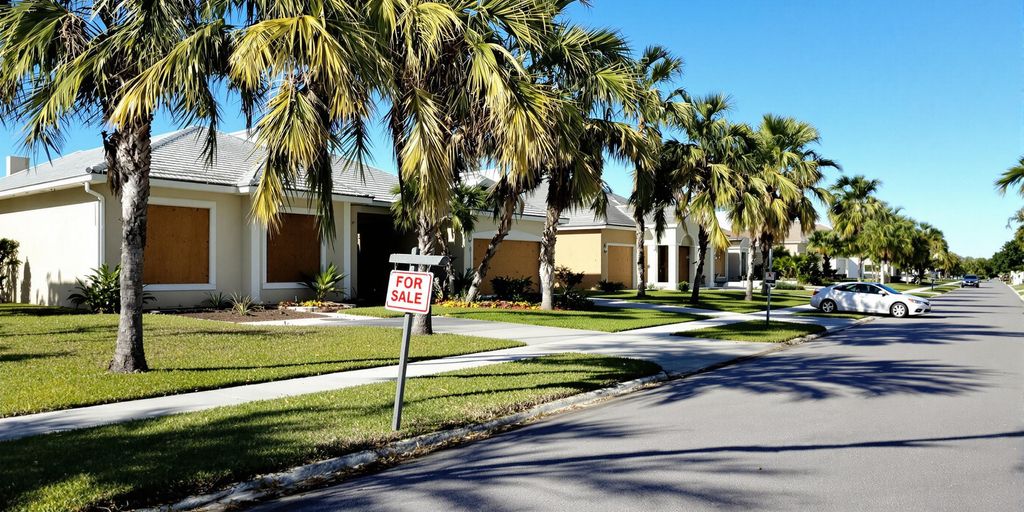Florida’s housing market is showing signs of potential weakness, particularly in key metropolitan areas like Cape Coral, North Port, and Lakeland. These regions are experiencing unusually high vacancy rates, driven largely by a surge in new construction and, in some cases, financial challenges faced by property owners. This trend presents both opportunities for buyers and renters, and challenges for market stability.
Florida’s Vacancy Epidemic: A Closer Look
A recent analysis of U.S. Census Bureau data reveals that several Florida housing markets are grappling with significant numbers of vacant homes. This phenomenon, often referred to as "ghost homes," indicates a supply that currently outpaces demand, leading to a buyer’s market in these specific areas.
Key Metro Areas Affected
- Cape Coral, FL: Leading the state with a vacancy rate of 25.72%, Cape Coral has seen a substantial influx of new construction, with 35.82 housing unit approvals per 1,000 units. While this offers more choices for buyers, it also raises concerns about short-term appreciation.
- North Port, FL: Following closely, North Port exhibits a vacancy rate of 21.23%, with 31.46 housing unit approvals per 1,000 units. Rapid development here has created a surplus of homes, prompting questions about the long-term sustainability of demand.
- Lakeland, FL: With a vacancy rate of 16.11%, Lakeland’s situation is attributed to an ongoing construction boom and changing demographics, as more people move to suburban areas.
Implications of High Vacancy Rates
High vacancy rates carry both advantages and disadvantages for the housing market:
Pros:
- Lower Prices: Increased supply often leads to more competitive pricing.
- More Options: Buyers and renters benefit from a larger selection of properties.
- Negotiating Power: High vacancy rates provide leverage for buyers in negotiations.
Cons:
- Slower Appreciation: An abundance of supply can hinder property value growth in the short term.
- Impact on Wealth Building: Slow appreciation can lead to less equity accumulation for homeowners.
- Neighborhood Concerns: Very high vacancy rates may raise concerns about community stability and upkeep, potentially leading to a decline in curb appeal and property values.
Navigating the Market
For those considering buying or renting in these Florida markets, experts advise:
- Shop Around: Explore various neighborhoods and compare prices extensively.
- Negotiate: Don’t hesitate to negotiate on price or rental terms.
- Due Diligence: Research local market trends, planned developments, and potential future growth.
- Consider Long-Term Goals: Evaluate how a property aligns with your long-term financial objectives.
Beyond Vacancy Rates: Other Market Factors
While vacancy rates are a crucial indicator, other factors also influence the housing market:
- Job Growth: A robust job market attracts new residents, boosting housing demand.
- Economic Development: New infrastructure and businesses can enhance an area’s desirability.
- Interest Rates: Fluctuations in interest rates directly impact affordability and buyer demand.
- Demographics: Shifts in population age and income levels can influence housing needs.
Key Takeaways
- Florida’s housing market is experiencing high vacancy rates in several key metro areas, primarily due to new construction and, in some cases, financial issues.
- Cape Coral, North Port, and Lakeland are identified as having the highest vacancy rates.
- High vacancy rates offer opportunities for buyers and renters through lower prices and increased negotiating power.
- However, they can also lead to slower property appreciation and potential concerns about neighborhood stability.
- Prospective buyers and renters should conduct thorough research and consider long-term financial goals.
Sources
- 3 Florida Housing Markets Having the Highest Vacancy Rates, Norada Real Estate Investments.
- Cape Coral, Fort Myers top list for vacant "ghost homes" in new study, Fox4Now.com.


